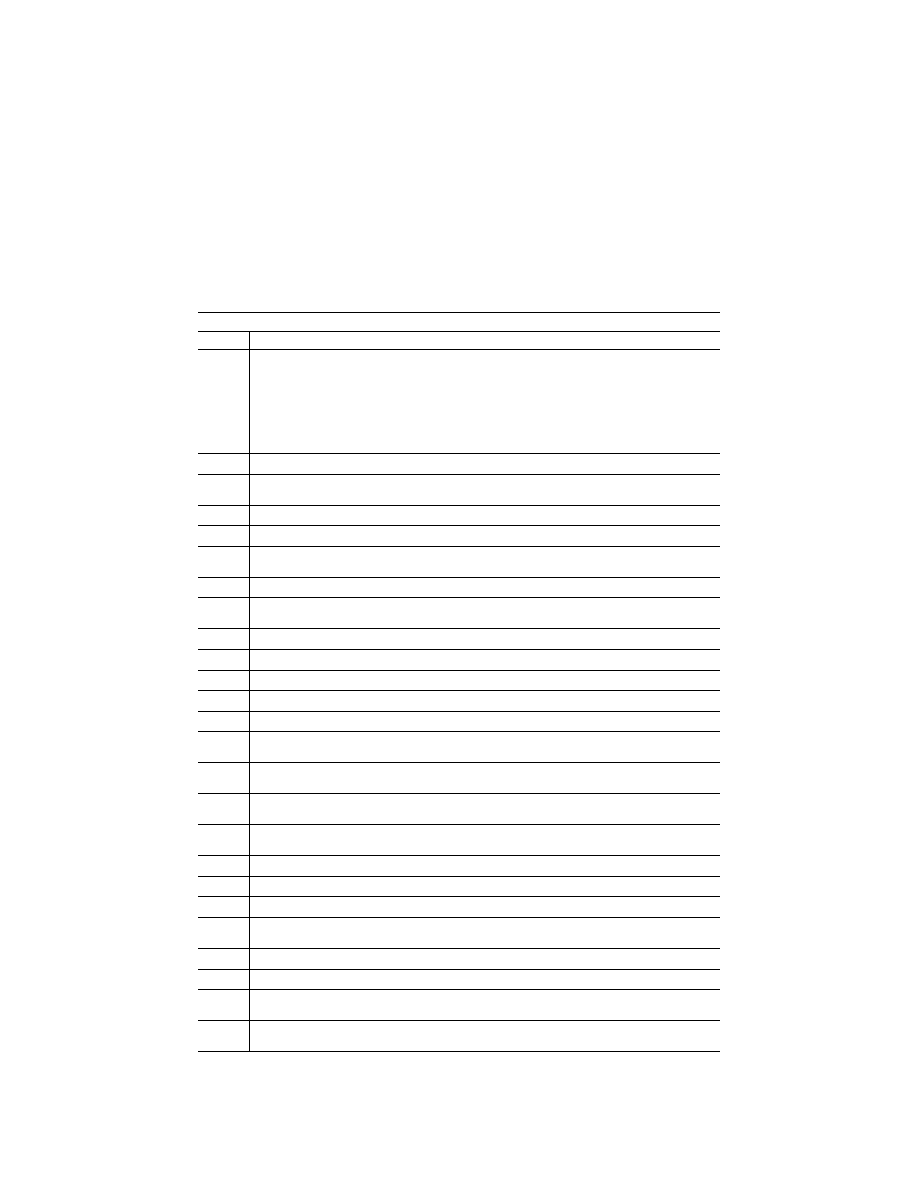
351
Federal Aviation Administration, DOT
Pt. 60, App. D
T
ABLE
D3C—T
ABLE OF
F
UNCTIONS AND
S
UBJECTIVE
T
ESTS
L
EVEL
7 FTD V
ISUAL
R
EQUIREMENTS
A
DDITIONAL
V
ISUAL
M
ODELS
B
EYOND
M
INIMUM
R
EQUIRED FOR
Q
UALIFICATION
C
LASS
II A
IRPORT
OR
H
ELICOPTER
L
ANDING
A
REA
M
ODELS
—Continued
QPS requirements
Entry No.
Operations tasks
3. ..............
Airport or Helicopter Landing Area Model Content.
The following prescribes the minimum requirements for what must be provided in an airport visual model and iden-
tifies other aspects of the airport environment that must correspond with that model. The detail must be devel-
oped using airport pictures, construction drawings and maps, or other similar data, or developed in accordance
with published regulatory material; however, this does not require that airport or helicopter landing area models
contain details that are beyond the designed capability of the currently qualified visual system. For circling ap-
proaches, all requirements of this section apply to the runway used for the initial approach and to the runway of
intended landing. Only one ‘‘primary’’ taxi route from parking to the runway end or helicopter takeoff/landing area
will be required for each ‘‘in-use’’ runway or helicopter takeoff/landing area.
3.a. ...........
The surface and markings for each ‘‘in-use’’ runway or helicopter landing area must include the following:
3.a.1. ........
For airports: Runway threshold markings, runway numbers, touchdown zone markings, fixed distance markings,
runway edge markings, and runway centerline stripes.
3.a.2. ........
For helicopter landing areas: Standard heliport marking (‘‘H’’), TOFL, FATO, and safety areas.
3.b. ...........
The lighting for each ‘‘in-use’’ runway or helicopter landing area must include the following:
3.b.1. ........
For airports: Runway approach, threshold, edge, end, centerline (if applicable), touchdown zone (if applicable),
leadoff, and visual landing aid lights or light systems for that runway.
3.b.2. ........
For helicopter landing areas: Landing direction, raised and flush FATO, TOFL, windsock lighting.
3.c. ...........
The taxiway surface and markings associated with each ‘‘in-use’’ runway or helicopter landing area must include
the following:
3.c.1. ........
For airports: Taxiway edge, centerline (if appropriate), runway hold lines, and ILS critical area(s).
3.c.2. ........
For helicopter landing areas: Taxiways, taxi routes, and aprons.
3.d. ...........
The taxiway lighting associated with each ‘‘in-use’’ runway or helicopter landing area must include the following:
3.d.1. ........
For airports: Runway edge, centerline (if appropriate), runway hold lines, ILS critical areas.
3.d.2. ........
For helicopter landing areas: Taxiways, taxi routes, and aprons.
4. ..............
Required visual model correlation with other aspects of the airport environment simulation.
The following are the minimum visual model correlation tests that must be conducted for Level 7 FTD.
4.a. ...........
The airport model must be properly aligned with the navigational aids that are associated with operations at the
‘‘in-use’’ runway.
4.b. ...........
Slopes in runways, taxiways, and ramp areas, if depicted in the visual scene, must not cause distracting or unreal-
istic effects.
5. ..............
Correlation with helicopter and associated equipment.
The following are the minimum correlation comparisons that must be made.
5.a. ...........
Visual system compatibility with aerodynamic programming.
5.b. ...........
Accurate portrayal of environment relating to flight simulator attitudes.
5.c. ...........
Visual cues to assess sink rate and depth perception during landings.
6. ..............
Scene quality.
The following are the minimum scene quality tests that must be conducted.
6.a. ...........
Light points free from distracting jitter, smearing or streaking.
6.b. ...........
Surfaces and textural cues free from apparent and distracting quantization (aliasing).
7. ..............
Instructor controls of the following.
The following are the minimum instructor controls that must be available.
7.a. ...........
Environmental effects, e.g., cloud base (if used), cloud effects, cloud density, visibility in statute miles/kilometers
and RVR in feet/meters.
VerDate Mar<15>2010
20:48 Jan 30, 2014
Jkt 232047
PO 00000
Frm 00361
Fmt 8010
Sfmt 8002
Q:\14\14V2.TXT
ofr150
PsN: PC150